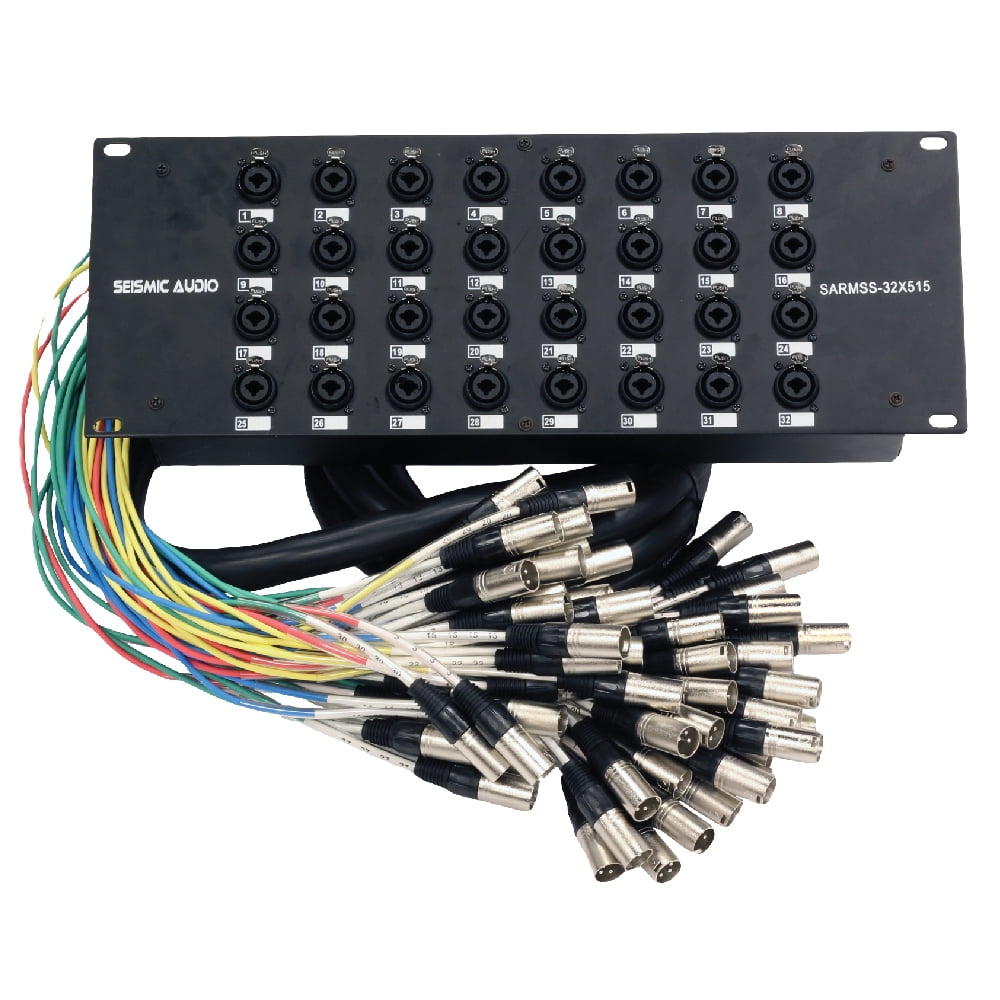

You can set the foam underneath the splitter snake and that should alleviate any issues I just warned of. If you’re in a tight spot financially and this is the only option, as I stated before, be sure to grab a big piece of foam and bring that with you to your shows. I’ve met many bands who have used Seismic’s rack-mounted splitter who have had no problems whatsoever. To be fair, I think our stage snake was abused at our live shows. What happened? We began to lose channels during live shows at FOH. The XLR connectors found on the Seismic splitter snake are a bit cheap and barely held our cables. A good DIY solution around this problem is to find some cheap foam that can sit underneath the snake box. If the stage vibrates at all because of low bass frequencies, it will disrupt the connection points for each XLR cable you have plugged in. This type of snake will be sitting on the ground on stage. You can go ahead and purchase a splitter that sits on the ground, but just be aware of a couple things: Things like digital mixing boards or backing track setups will no longer need to be patched on the monitor end during a soundcheck.
#AUDIO SPLITTER SNAKE PATCH#
You’ll be able to patch them much easier and, best of all, you’ll be able to leave everything patched in the back of your rack. These types of snakes require a stage rack, but you’ll get much more value out of them. Rack-mounted splitter snakes vs floor snakes I highly suggest you get a rack-mounted splitter snake. We have gone through two of these splitter snakes, but it was most likely because of other bands and stage crew accidentally stepping on the snake.

They make great products, but I suggest that you stay away from any of their floor stage boxes. Seismic Audio is a company that prides itself on inexpensive gear. You can read how we did it and what we used here. We switched to in-ear monitors over two years ago. This allows your band to have your own monitor mixes, adjust your own EQ ( separate of FOH), add reverb and delays, and have total control of your on-stage in ear monitor mix. One of these XLR fans will be sent to the FOH engineer’s mixing desk and the other XLR fan will go into your monitor board. This piece of gear is essentially a regular audio snake outfitted with two XLR fan tails, effectively splitting the audio signal in two paths.

The pricing on these splitter snakes is going to vary drastically, but it is worth it the higher up the price spectrum you go. What your band needs might not be what another does. One thing to note: there are many different options available. I’m writing this article to save your band time and money and not to make the same mistakes we made upon purchase our first one. When we purchased our splitter snake, we went through two poorly-made ( though abused on stage) ones before finding one that lasted the test of time. Go with rack-mounted, as this protects the snake from being stepped on while on stage. If you’re looking for an affordable splitter snake, check out this one from Seismic. You need a way to split the audio feed from all the microphones on stage to go your monitor board and to go to the front of house mixing board. This piece of audio gear is required for using a digital monitor board at live gigs (unless you bring your own FOH console). Picking a Splitter Snake for your Band’s IEM System You’re setting everything up and getting all configured when you realize you’ve missed one piece of the puzzle: the splitter snake. Your band just bought a brand-new digital mixing board as well as in-ear monitor units. If you click and make a purchase, I get a small commission. Disclaimer: Links throughout the article may be affiliated.


 0 kommentar(er)
0 kommentar(er)
